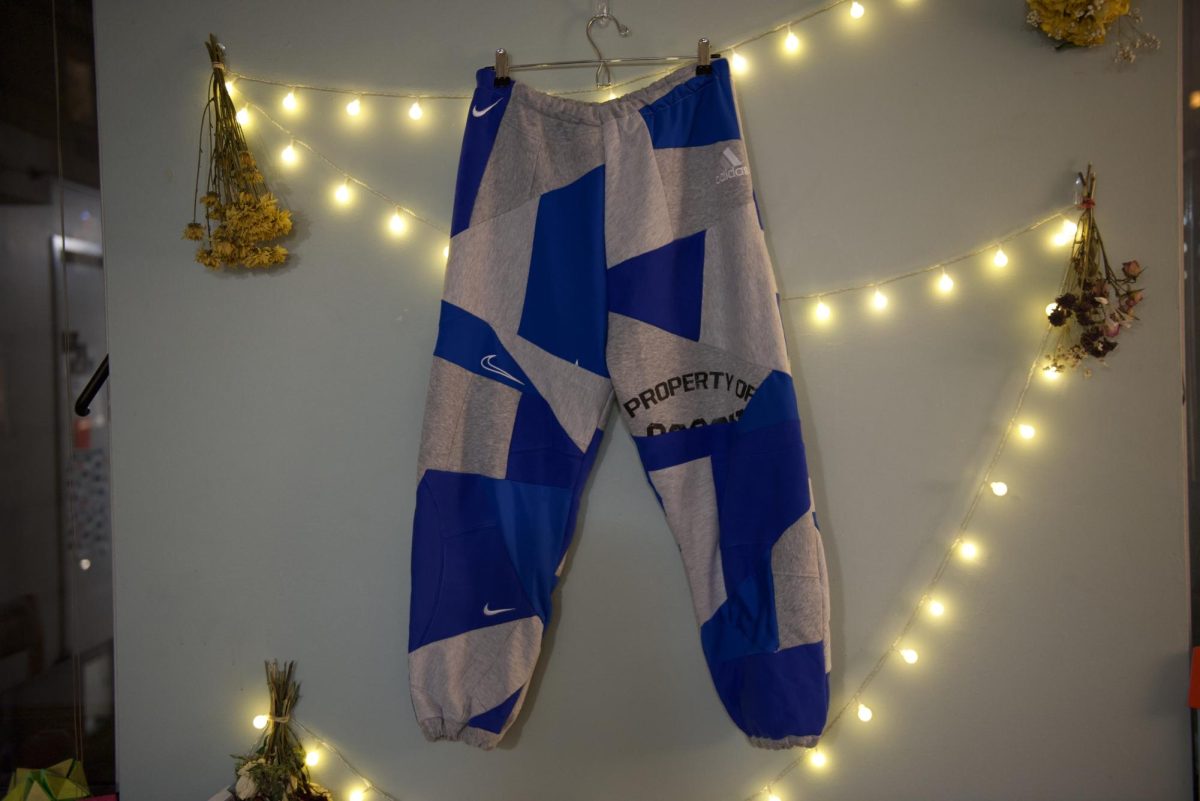For some students, their love for fashion goes beyond shopping and styling cute outfits — they choose to recycle their own clothes.
Regina Chiem, Fordham College at Lincoln Center (FCLC) ’26, described the process of recycling clothes as taking what she finds in her wardrobe and putting it into a new context. Customizing clothes and fabrics, Chiem adjusts the fit and detailing through specific techniques.
Chiem shared that she learned to sew from her grandmother, a seamstress who designed outfits for her American Girl Doll when Chiem was eight years old. Chiem then began recycling clothes for herself when she was 13.
“I don’t like to go find new fabrics because with fast fashion, there are so many fabrics available now, and they are available pretty quickly.”Caroline Walkup, FCLC ’26
Noting that her family is frugal, Chiem was compelled to upcycle her clothes to ensure she could be comfortable in her clothes and mindful of her economic circumstances. She explained that this autonomy in creating her clothes came to her “naturally.”
“For her, it was a means to an end, and for me, it was a way to make sure that I felt comfortable,” Chiem said, describing the different relationships her and her grandmother developed with recycling clothing.
Chiem estimates having recycled at least 50 pieces and shared that she’smost proud of recycling a corduroy jacket and a cork bag she wears regularly.
“The inside lining of the cork bag that I always wear was completely trashed when I got it — I took the entire thing out and added lining to it and pockets, which makes it more functional and allows for a bit of safety for my stuff,” she said.
Another student, Caroline Walkup, FCLC ’26, found a different path to recycling clothes. Similar to Chiem, Walkup’s grandmother and aunt taught her how to sew and she began experimenting with the sewing machine during the COVID-19 pandemic. Since then, Walkup has recycled five pieces.
Walkup shared that her first project was creating a corset top, which she accomplished by watching a do-it-yourself video on YouTube, and mastered the craft by experimenting with fabrics she received from Goodwill.
“For her, it was a means to an end, and for me, it was a way to make sure that I felt comfortable.”Regina Chiem, FCLC ’26
“I wasn’t really planning to have it go further than seeing what would happen with the little projects,” she said. “I decided that it was a lot of fun working with these materials. It was a refreshing new activity to do.”
Echoing Chiem, Walkup avoids buying new fabrics and gives new life to pieces and fabrics that she finds.
“I don’t like to go find new fabrics because with fast fashion, there are so many fabrics available now, and they are available pretty quickly,” Walkup said. “If I need to get new materials, I typically go to a Goodwill or a thrift store that has an abundance of clothes that need to be renewed and recycled.”
While Walkup and Chiem both learned to sew from their family members, they also utilized social media as a source of inspiration. The platforms that they both used include YouTube, which aided in learning sewing techniques, as well as Instagram, Pinterest and Google, which they used to find outfit inspiration.
However, the two students utilized different tools and materials to recycle clothes. Walkup transformed fabrics via a sewing machine, while Chiem opted for a needle and thread.
Chiem suggested that those who want to go beyond styling clothes to recycling them should not hesitate.
“Get inspiration from what you like, go out and see what pieces are going to help you get there — and don’t expect to be good,” she said.


